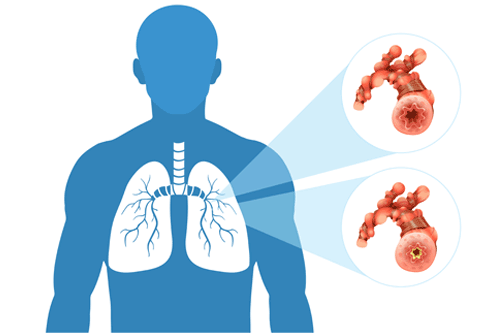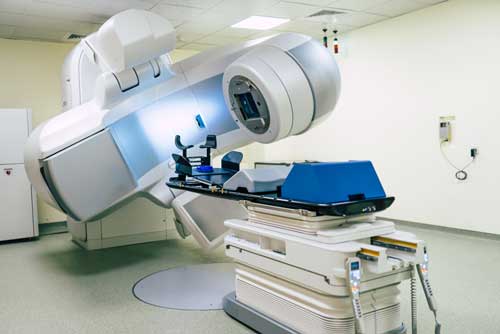Introduction
Lung cancer remains one of the most common and serious forms of cancer worldwide. Despite advancements in medical science, it continues to be a leading cause of cancer-related deaths. However, early detection and innovative treatments have significantly improved survival rates and quality of life for patients. In this blog, we will explore the causes and symptoms of lung cancer, delve into the latest treatment options, and highlight the importance of early detection and prevention.
Causes and Risk Factors of Lung Cancer
Lung cancer develops when abnormal cells in the lungs grow uncontrollably. The primary causes and risk factors include:
- Smoking: Cigarette smoking is the leading cause of lung cancer, responsible for approximately 85% of cases. The risk increases with the number of cigarettes smoked and the duration of smoking. Both active smokers and those exposed to secondhand smoke are at risk.
- Radon Exposure: Radon is a naturally occurring radioactive gas that can accumulate in homes and buildings. Long-term exposure to high levels of radon is a significant risk factor for lung cancer.
- Asbestos Exposure: Asbestos fibers, once widely used in construction and manufacturing, can cause lung cancer when inhaled. Workers in industries with asbestos exposure are particularly at risk.
- Genetics: A family history of lung cancer can increase an individual’s risk. Genetic mutations and inherited conditions can predispose some people to the disease.
- Environmental and Occupational Exposures: Exposure to certain chemicals and pollutants, such as arsenic, diesel exhaust, and certain metals, can elevate the risk of lung cancer.
Symptoms of Lung Cancer
Lung cancer symptoms often appear in advanced stages, making early detection challenging. Common symptoms include:
- Persistent cough that does not go away
- Coughing up blood or rust-colored sputum
- Chest pain that worsens with deep breathing or coughing
- Shortness of breath and wheezing
- Unexplained weight loss and loss of appetite
- Fatigue and weakness
- Frequent respiratory infections, such as pneumonia or bronchitis
If you experience any of these symptoms, especially if you have risk factors for lung cancer, it is crucial to seek medical attention promptly.
Advances in Lung Cancer Treatment
Treatment for lung cancer has evolved significantly, offering hope and improved outcomes for patients. Key advancements include:
- Minimally Invasive Surgery: Surgical techniques such as Video-Assisted Thoracoscopic Surgery (VATS) and Robotic-Assisted Surgery allow for smaller incisions, reduced pain, and quicker recovery times compared to traditional open surgery.
- Targeted Therapy: Targeted therapies focus on specific genetic mutations and proteins that drive cancer growth. Medications like tyrosine kinase inhibitors (TKIs) have shown great promise in treating certain types of lung cancer with fewer side effects than traditional chemotherapy.
- Immunotherapy: Immunotherapy harnesses the body’s immune system to fight cancer. Drugs such as checkpoint inhibitors help the immune system recognize and attack cancer cells, offering new hope for patients with advanced lung cancer.
- Precision Medicine: Precision medicine involves tailoring treatment based on the genetic profile of the tumor. This approach allows for more personalized and effective therapies, improving outcomes and minimizing unnecessary treatments.
- Radiation Therapy: Advances in radiation therapy, such as stereotactic body radiotherapy (SBRT), allow for precise targeting of tumors with high doses of radiation while sparing surrounding healthy tissue.
The Importance of Early Detection and Prevention
Early detection of lung cancer significantly increases the chances of successful treatment. Screening methods such as low-dose computed tomography (LDCT) scans can detect lung cancer at earlier, more treatable stages in high-risk individuals, such as long-term smokers.
Prevention Tips:
- Quit Smoking: The most effective way to reduce lung cancer risk is to quit smoking. Numerous resources, including counseling and nicotine replacement therapies, can support smoking cessation efforts.
- Test for Radon: Home radon testing and mitigation can reduce exposure to this harmful gas.
- Occupational Safety: Follow safety guidelines to minimize exposure to harmful substances in the workplace.
- Healthy Lifestyle: Maintain a healthy diet, exercise regularly, and avoid exposure to secondhand smoke.
Conclusion
Lung cancer remains a formidable challenge in the medical community, but ongoing research and technological advancements continue to improve the outlook for patients. By understanding the causes, recognizing the symptoms, and embracing the latest treatments, we can better combat this disease and support those affected by it. Early detection and prevention are key to reducing the impact of lung cancer, and together, we can make strides towards a healthier future.





